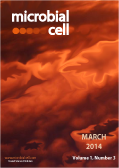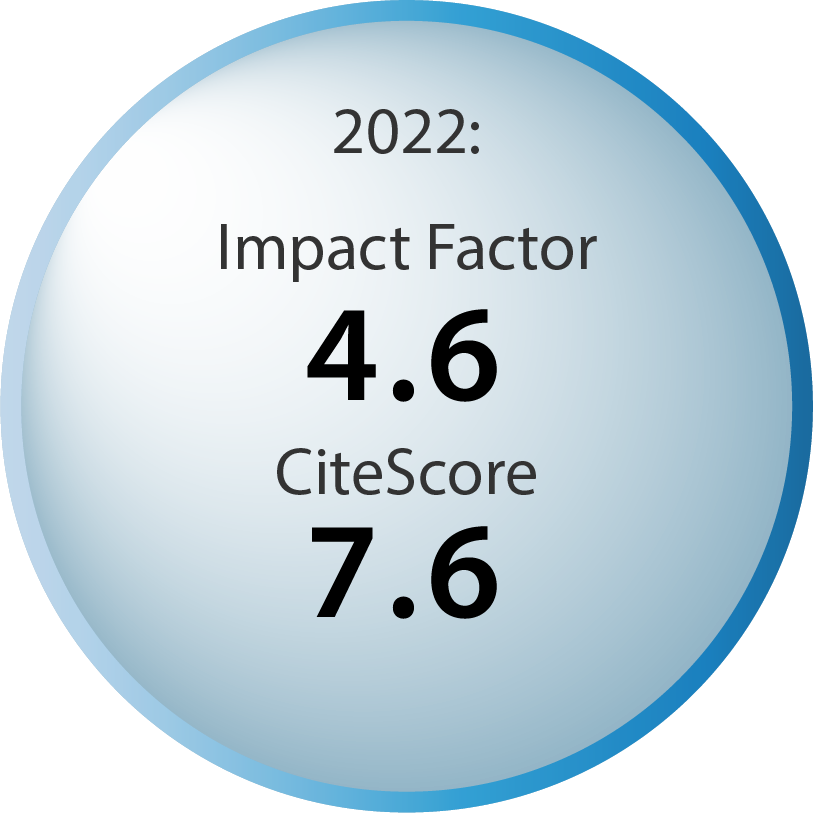Table of contents
Volume 1, Issue 3, pp. 70 - 109, March 2014
Cover: Yeast as a model for lethal and vital functions of mitochondria. Picture by Sabrina Büttner (University of Graz). The cover is published under the Creative Commons Attribution (CC BY) license.
Enlarge issue cover
Genome-wide studies of telomere biology in budding yeast
Yaniv Harari and Martin Kupiec
Reviews |
page 70-80 | 10.15698/mic2014.01.132 | Full text | PDF |
Abstract
Telomeres are specialized DNA-protein structures at the ends of eukaryotic chromosomes. Telomeres are essential for chromosomal stability and integrity, as they prevent chromosome ends from being recognized as double strand breaks. In rapidly proliferating cells, telomeric DNA is synthesized by the enzyme telomerase, which copies a short template sequence within its own RNA moiety, thus helping to solve the “end-replication problem”, in which information is lost at the ends of chromosomes with each DNA replication cycle. The basic mechanisms of telomere length, structure and function maintenance are conserved among eukaryotes. Studies in the yeast Saccharomyces cerevisiae have been instrumental in deciphering the basic aspects of telomere biology. In the last decade, technical advances, such as the availability of mutant collections, have allowed carrying out systematic genome-wide screens for mutants affecting various aspects of telomere biology. In this review we summarize these efforts, and the insights that this Systems Biology approach has produced so far.
Protein oxidation in the intermembrane space of mitochondria is substrate-specific rather than general
Valentina Peleh, Jan Riemer, Andrew Dancis and Johannes M. Herrmann
Research Articles |
page 81-93 | 10.15698/mic2014.01.130 | Full text | PDF |
Abstract
In most cellular compartments cysteine residues are predominantly reduced. However, in the bacterial periplasm, the ER and the mitochondrial intermembrane space (IMS), sulfhydryl oxidases catalyze the formation of disulfide bonds. Nevertheless, many IMS proteins contain reduced cysteines that participate in binding metal- or heme-cofactors. In this study, we addressed the substrate specificity of the mitochondrial protein oxidation machinery. Dre2 is a cysteine-rich protein that is located in the cytosol. A large fraction of Dre2 bound to the cytosolic side of the outer membrane of mitochondria. Even when Dre2 is artificially targeted to the IMS, its cysteine residues remain in the reduced state. This indicates that protein oxidation in the IMS of mitochondria is not a consequence of the apparent oxidizing environment in this compartment but rather is substrate-specific and determined by the presence of Mia40-binding sites.
Salt stress causes cell wall damage in yeast cells lacking mitochondrial DNA
Qiuqiang Gao, Liang-Chun Liou, Qun Ren, Xiaoming Bao and Zhaojie Zhang
Research Articles |
page 94-99 | 10.15698/mic2014.01.131 | Full text | PDF |
Abstract
The yeast cell wall plays an important role in maintaining cell morphology, cell integrity and response to environmental stresses. Here, we report that salt stress causes cell wall damage in yeast cells lacking mitochondrial DNA (ρ0). Upon salt treatment, the cell wall is thickened, broken and becomes more sensitive to the cell wall-perturbing agent sodium dodecyl sulfate (SDS). Also, SCW11 mRNA levels are elevated in ρ0 cells. Deletion of SCW11 significantly decreases the sensitivity of ρ0 cells to SDS after salt treatment, while overexpression of SCW11 results in higher sensitivity. In addition, salt stress in ρ0 cells induces high levels of reactive oxygen species (ROS), which further damages the cell wall, causing cells to become more sensitive towards the cell wall-perturbing agent.
Fatal attraction in glycolysis: how Saccharomyces cerevisiae manages sudden transitions to high glucose
Johan H. van Heerden, Meike T. Wortel, Frank J. Bruggeman, Joseph J. Heijnen, Yves J.M. Bollen, Robert Planqué, Josephus Hulshof, Tom G. O’Toole, S. Aljoscha Wahl and Bas Teusink
Microreviews |
page 103-106 | 10.15698/mic2014.01.133 | Full text | PDF |
Abstract
In the model eukaryote Saccharomyces cerevisiae, it has long been known that a functional trehalose pathway is indispensable for transitions to high glucose conditions. Upon addition of glucose, cells with a defect in trehalose 6-phosphate synthase (Tps1), the first committed step in the trehalose pathway, display what we have termed an imbalanced glycolytic state; in this state the flux through the upper part of glycolysis outpaces that through the lower part of glycolysis. As a consequence, the intermediate fructose 1,6-bisphosphate (FBP) accumulates at low concentrations of ATP and inorganic phosphate (Pi). Despite significant research efforts, a satisfactory understanding of the regulatory role that trehalose metabolism plays during such transitions has remained infamously unresolved. In a recent study, we demonstrate that the startup of glycolysis exhibits two dynamic fates: a proper, functional, steady state or the imbalanced state described above. Both states are stable, attracting states, and the probability distribution of initial states determines the fate of a yeast cell exposed to glucose. Trehalose metabolism steers the dynamics of glycolysis towards the proper functional state through its ATP hydrolysis activity; a mechanism that ensures that the demand and supply of ATP is balanced with Pi availability under dynamic conditions. [van Heerden et al. Science (2014), DOI: 10.1126/science.1245114.]
Massive gene swamping among cheese-making Penicillium fungi
Jeanne Ropars, Gabriela Aguileta, Damien M. de Vienne and Tatiana Giraud
Microreviews |
page 107-109 | 10.15698/mic2014.01.135 | Full text | PDF |
Abstract
Horizontal gene transfers (HGT), i.e., the transmission of genetic material between species not directly attributable to meiotic gene exchange, have long been acknowledged as a major driver of prokaryotic evolution and is increasingly recognized as an important source of adaptation in eukaryotes. In fungi in particular, many convincing examples of HGT have been reported to confer selective advantages on the recipient fungal host, either promoting fungal pathogenicity on plants or increasing their toxicity by the acquisition of secondary metabolic clusters, resulting in adaptation to new niches and in some cases eventually even in speciation. These horizontal gene transfers involve single genes, complete metabolic pathways or even entire chromosomes. A recent study has uncovered multiple recent horizontal transfers of a 575 kb genomic island in cheese Penicillium fungi, representing ca. 2% of the Penicillium roqueforti’s genome, that may confer selective advantage in the competing cheese environment where bacteria and fungi occur. Novel phylogenomic methods are being developed, revealing massive HGT among fungi. Altogether, these recent studies indicate that HGT is a crucial mechanism of rapid adaptation, even among eukaryotes.
Mnemons: encoding memory by protein super-assembly
Fabrice Caudron and Yves Barral
Microreviews |
page 100-102 | 10.15698/mic2014.01.134 | Full text | PDF |
Abstract
Memory is mainly understood as the recollection of past events. The human brain and its simplest unit, the synapse, belong to the places in which such memories are physically stored. From an experimental point of view, memory can be tested in humans by recall. However, in other organisms, memory is reflected in its use by individuals to learn about and adapt their behavior to their environment. Under this criterion, even unicellular organisms are able to learn from their environments and show the ability to adapt their responses to repeating stimuli. This indicates that they are able to keep track of their histories and use these traces to elaborate adapted responses, making these traces akin to memory encodings. Understanding these phenomena may even help us to dissect part of the rather complex molecular orchestration happening in our synapses. When exposed unsuccessfully to mating pheromone, i.e. when mating does not happen, budding yeast cells become refractory to the mating signal. This refractory state is restricted to the mother cell and not inherited by the daughter cells, even though it is stable for most if not the entire life span of the mother cell. Interestingly, both stability and asymmetric segregation of the acquired state are explained by the molecular mechanism underlying its establishment, which shows important analogies and distinctions to prions. Here we discuss these similarities and differences.










